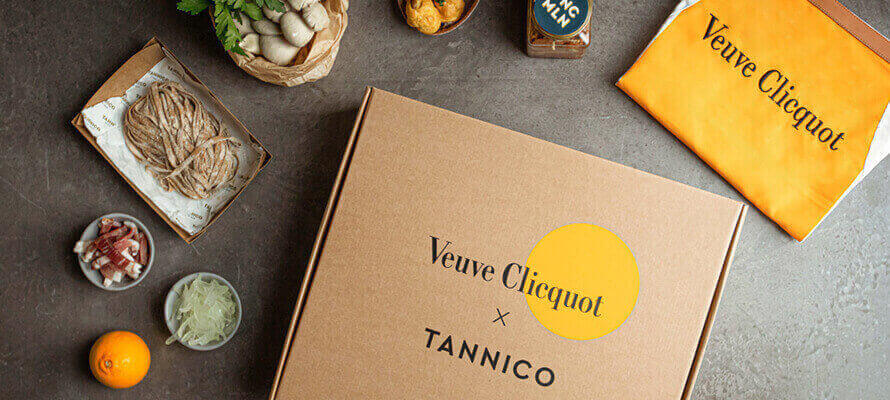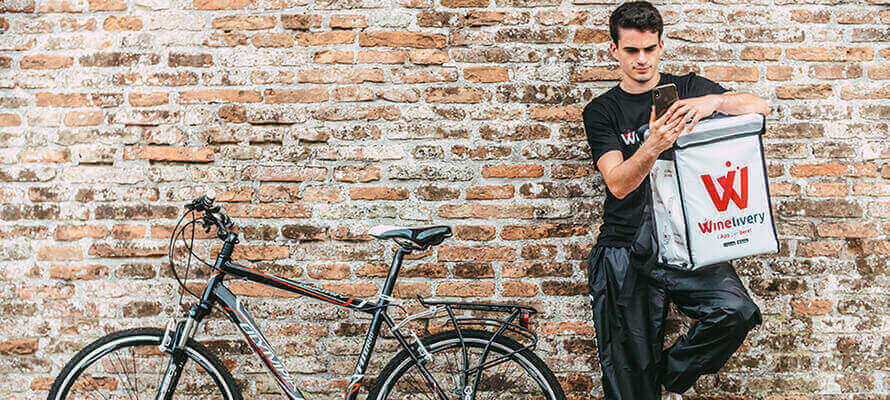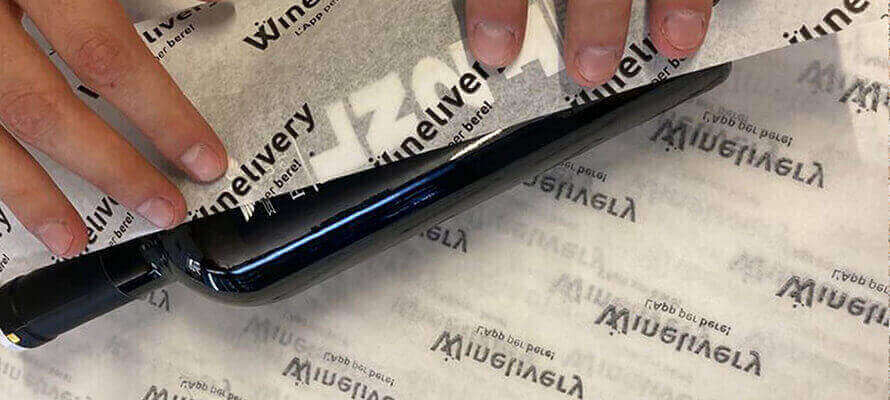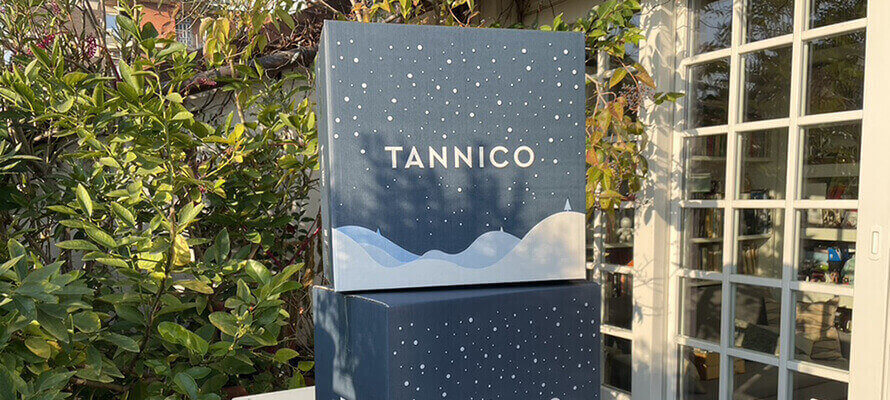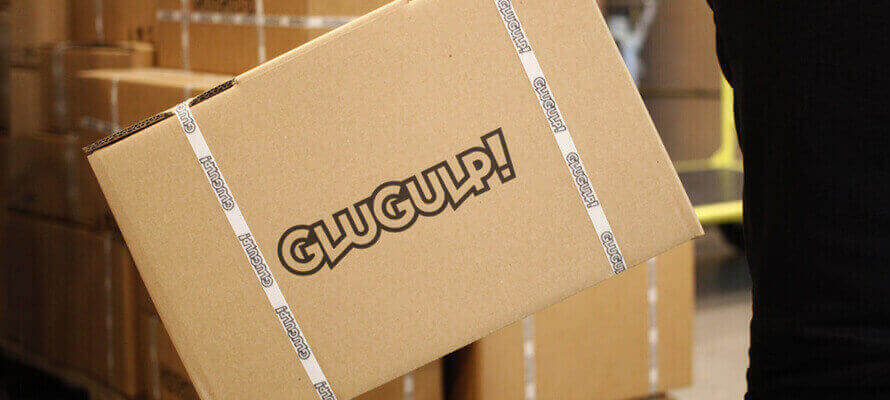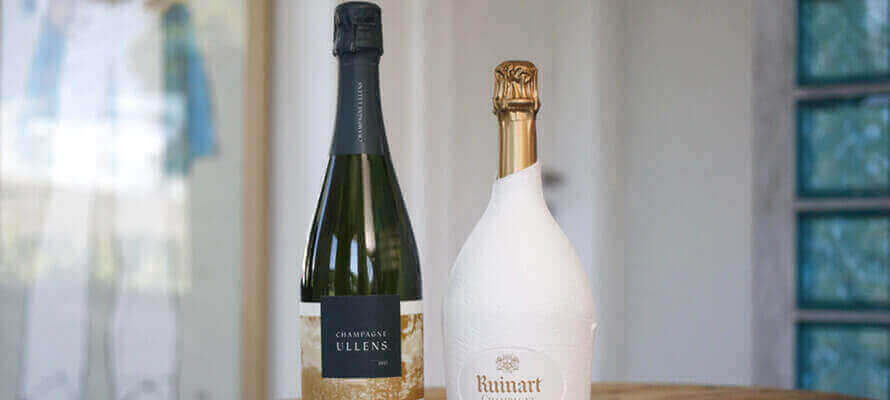Great year for online wine
After a 2020 marked by exceptional circumstances that made online commerce explode, wine delivery platforms are working to consolidate their presence in the consumption habits of Italians, focusing on personalisation and packaging that combines safety, convenience and sustainability. We asked three B2C wine delivery companies, Tannico, Glugulp! and Winelivery, how they are experiencing this moment.
By Roberta Ragona | On PRINTlovers 88
Wine is a product that has always been used to travelling. From the wooden crates branded with the coat of arms of the wineries to the straw that in the past protected the bottles from the worst impacts, the importance of brand identity and the practical needs of logistics have always been part of the history and imagination of wine.
The wine world was among the first to identify the possibilities of online trade for the export of Italian wine products. In recent years, however, there has been a profound change in the service on offer, no longer designed solely for large volumes and aimed at large buyers in the wholesale market but rather to meet the everyday needs of end consumers. A change of mentality that combines the streamlined nature of start-ups aimed at a younger public open to experimentation with the expertise and attention to the quality of the wine world.
We are talking about platforms that were created in the last decade, but in the past year have experienced the transition from a user base of early adopters to an audience that has discovered the convenience of buying online compared to traditional retail channels. According to leading international analysts, in 2020, Italy has unequivocally made up the gap that separated it in the purchase of wine online from countries such as the United States or England, where e-commerce accounts for around 10% of total purchases.
Marco Magnocavallo, founder and CEO of Tannico, confirms, “2020 was a year not only of a boom in online wine purchases but also of changes in consumer behaviour. At the start of the first lockdown, we recorded a 100% increase in volumes, 10% increase in purchase frequency and 5% increase in bottle quantities per order placed.”
Andrea Antinori, co-founder of Winelivery - a platform specialising in wine, spirits and ready-to-drink cocktail kits - also confirms an average growth in orders on the platform of 350%, with a peak of 600% in 2020 compared to the previous year. These are unprecedented numbers achieved thanks in part to the delivery methods of the service, which offers single bottles and cocktail kits to the home, allowing more frequent orders linked to the moment of immediate consumption. It is precisely this expandability of individual orders that has allowed Winelivery to detect a change in the consumption habits of alcoholic beverages, with an increase in orders at all times of day, not just aperitif time, with a particularly marked increase at lunchtime and on Sundays. A change also confirmed by Roberta Longhi, Marketing manager at Glugulp! - a platform specialising in the online sale of champagne - which has seen a growth both in volumes and in the habit of consuming champagne, no longer considered just an exception for special occasions but a permanent fixture for high-level food and wine experiences at home.
From the virtual shelf to personalised unboxing
With the change in habits and a customer journey in which the purchase is no longer guided by the experience on the shelf, packaging communication methods are also changing. Andrea Antinori of Winelivery explains how important it is to know where consumers are in their purchasing journey. “Communicating the platform through various channels - including, of course, our packaging - is essential to bring in those who don’t yet know us or haven’t tried our service themselves: it’s a vital moment of awareness. Then, once the consumer is inside, communication must shift its focus from Winelivery itself to the products we offer and the wide range of choices, because it is on these two aspects that consumer loyalty is built.”
Tannico’s Magnocavallo confirms how a non-obvious communication of the platform is fundamental in contributing to the enjoyment of the whole experience. “Tannico’s cartons move away from the clichés we are used to associating with the world of wine&spirits. Tannico’s packaging has a design that is closer to the world of fashion, starting with the choice of blue as the dominant colour instead of the now overused red in its various shades, traditionally associated with wine. At the time of unboxing, the customer is greeted by booklets produced in collaboration with various international illustrators. Value is given to the work of those who are in the vineyard and produce the wine, with a language that is at the side of the people and never in the chair, expert but never know-it-all.
Particularly popular with consumers are the various possibilities of packaging or internal elements such as postcards and other printed products. As well as the option of including a personalised message for the recipient in the delivery, Winelivery offers its B2B customers even more sophisticated customisation possibilities, from the livery of the packaging, through the personalisation of the bags to
the bottle itself.
Logistics, sustainable lightness
From a packaging and handling point of view, wine has always been a product with specific needs regarding ease of transport, safety and logistics. The challenge facing delivery services is to replace traditional materials, such as wood, with lighter but equally sustainable and durable ones such as corrugated cardboard. This brings about a significant reduction in transported weight with the same safety and the possibility of satisfying a more substantial number of orders per shipment and lower CO2 emissions related to transport and logistics. And this is where design and converting come to the rescue, having developed innovative solutions to meet these requirements. Tannico’s Marco Magnocavallo continues, “We are lucky because in our sector the best packaging from an operational point of view (product safety and protection, ease of storage and assembly, speed of supply and cost) is also the most sustainable, i.e. a 100% cardboard package, which is easily compactable and recyclable. Our packaging is FSC certified; we rely on several suppliers - mainly large international paper groups - to whom we have licensed the production of our packaging, which uses an internationally patented protection solution, NakPack. All this is to minimise breakages, reduce the amount of cardboard used and ease and speed of assembly while still guaranteeing maximum safety in the transport of wine and spirits, passing the strict crash tests necessary to obtain the certifications of the main international couriers.”
Roberta Longhi of Glugulp! confirms that the search for more sustainable solutions crosses over between platforms and producers in a situation where sustainability is also an essential lever in consumers’ purchasing process. “Many Maison and Vigneron have reviewed their packaging choices: the most striking example is the ‘second skin case’, the eco-sustainable packaging made by the Italian paper company Pusterla 1880, chosen by Maison Ruinart for Champagne Blanc de Blancs and Rosé in place of traditional coffrets. It is an entirely recyclable wrapper made of 100% wood fibres, with a silky surface, lighter, more resistant and light-proof to preserve the integrity of the wine’s taste. Another example among our producers is Maxime and Anna Ullens of Domaine de Marzilly, who have chosen a vegetable-based ink for their labels and opted for low-CO2 printing. For Glugulp! shipments, we rely on sustainable, reliable and safe packaging: the WinePulp inner packaging is plant-derived, made of 100% recovered cellulose pulp, recyclable and biodegradable. In this way, each bottle we send out is enclosed in a pair of wrappers that protects and keeps it stables during transport. The outer shipping box - made of reinforced double-wave cardboard to mitigate impact - is self-assembling with a closure designed to avoid the use of plastic or adhesive. In addition, all boxes are sealed with branded anti-burglar straps to protect the contents from tampering.”
Hybrid future
If during 2020, as a result of various lockdowns, the delivery market has found itself absorbing and replacing consumption that would typically have been satisfied by eating and drinking out, 2021 will be the real test of whether this new habit has taken root enough to become part of consumers’ daily routine. Everyone agrees that the future of delivery is likely to be about hybrid experiences, with online and offline, pop-up shops and online tasting classes working together harmoniously as a single ecosystem. At Tannico, they are strong on the experiences of the past year: “We have adapted to the new requirements by accelerating in 2020 the home entertainment projects that were already being developed, such as the Tannico Wine Tasting online, which allowed Tannico customers or simple enthusiasts to taste from home in the company of the major exponents of Italian wineries: Cantine Ferrari with Marcello Lunelli, Antonio Rallo of Donnafugata and Klaus Gasser of Cantine Terlano. We have also experimented with new ways of doing events, collaborating, for example, with Veuve Clicquot in organising two master experiences directly at home.”
Winelivery is, on the other hand, working on the opening of pop-up stores, the first of which in Milan, the city where the platform was born, where the serving service will be accompanied by delivery. The store will be the testing ground for bringing the hybrid experience of delivery and on-site tasting to other cities in Italy.
Wine delivery is a phenomenon that can only grow in the future: the strategic consulting firm Nomisma estimates that in 2019 wine e-commerce was worth €200 million in Italy and that the numbers will have doubled in the first half of 2020 compared to the same period last year. The market is split between 17% of large-scale retailers and 83% of pure players such as Tannico, Winelivery and Glugulp!, which also act as a tool to put small producers in direct contact with those who want not only to drink well but also to make wine an experience. And for these experiences to be memorable, the sensory experience of packaging will be a more fundamental component than ever.
